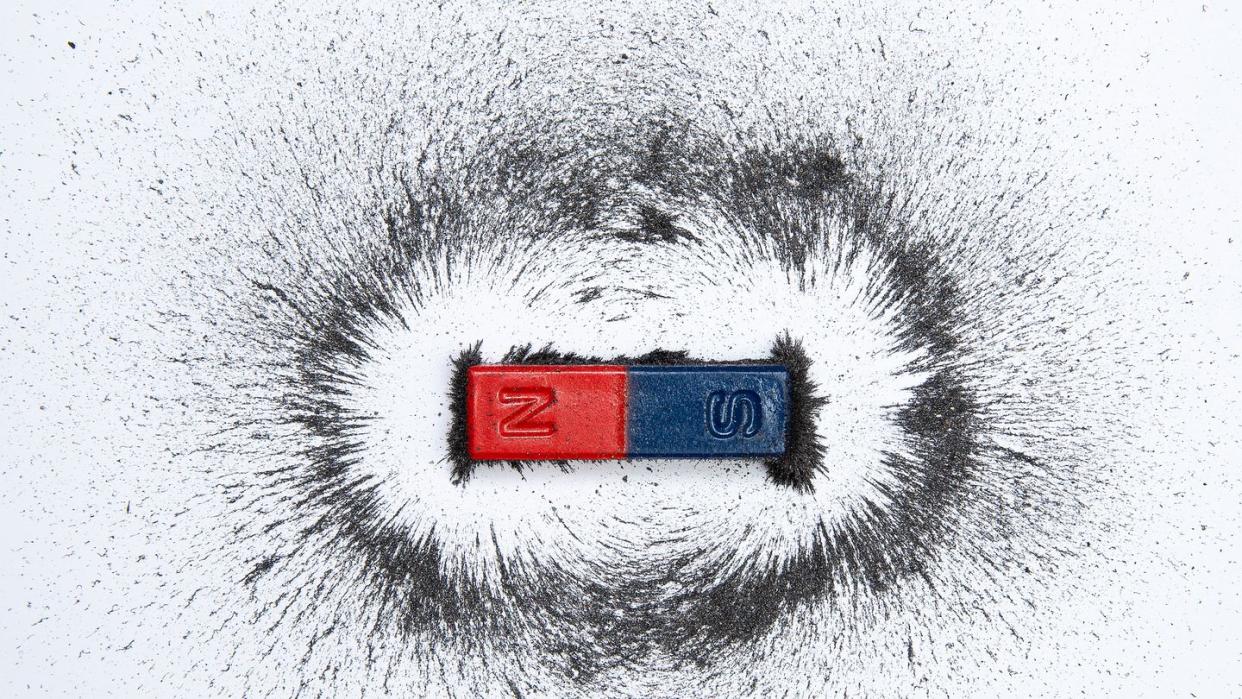A Wild Experiment With Magnets Actually Suspended Gravity

Gravity basically doesn’t factor into a new style of rotation-based magnetic levitation being developed.
This spin-stabilized levitation uses a rotating magnet to steady the levitating magnet and lock it in place.
Magnetic levitation is already in use across the world and the new style has applications with contactless handling of objects.
Gravity basically isn’t part of the physics equation when spin-stabilized levitation enters the fray. As research continues to build on a new type of magnetic levitation—which features a spinning rotor magnet that levitates a floater above it—scientists have come to believe this newfound style of anti-gravity levitation has real-world applications.
First demonstrated in 2021 by Turkish electronics engineer Hamdi Ucar, a research team at the Technical University of Denmark expanded on the gravity-countering concept, publishing their findings in Physical Review Applied this past October. In their study, the team demonstrated just how simple the concept is to produce and repeat.
The also showed exactly what surprising and unexpected physics makes the whole process tick.
Magnetic levitation (sometimes referred to as maglev) is already seen across the world in everything from floating trains to high-speed machinery. But spin-stabilized levitation could simplify future uses of magnetic levitation, thanks to its compatibility with contact-free design. Current styles of maglev require control systems to supply magnetic force and conduct energy currents. This fresh approach instead only needs to spin one magnet in order to keep the other in place.
“Magnets should not hover when they are close together,” said Rasmus Bjørk, a study lead and physicist at TU-Denmark, according to The Debrief. “Usually, they will either attract or repel each other. But if you spin one of the magnets, it turns out, you can achieve this hovering. And that is the strange part. The force affecting the magnets should not change just because you rotate one of them, so it seems there is a coupling between the movement and the magnetic force.”
The rotor magnet does the spinning. If a motor can keep the rotor magnet moving, it can do the job of keeping the other magnet, dubbed the floater, levitating. “We have found that as levitation occurs,” the authors wrote in the study, “the floater-magnet frequency locks with the rotor magnet and, noticeably, that the magnetization of the floater is oriented close to the axis of rotation and toward the like pole of the rotor magnet.”
But why? Well, in contrast to what might be expected by the laws of magnetostatics, it turns out that the floater aligns its magnetization essentially perpendicular to the magnetic field of the rotor.
“It is quite surprising that magnetic levitation develops in such a relatively simple system,” Bjørk told Physics World.
That discovery means that the floater can levitate stably, thanks to the interaction. “It is intuitive to all that the magnetostatic force that one magnet exerts on another can be both attractive and repulsive,” Frederik Laust Durhus, a study lead and physicist at TU-Denmark, told Physics World. “Without rotation, the free magnet will rotate so the force becomes purely attractive and then the magnets will collide into each other. What makes the new magnetic levitation system so special is that the rotation itself allows the floater to remain in a counterintuitive configuration, nearly perpendicular to the floater’s field, where the magnetostatic force both attracts and repels it.”
Such a setup could prove useful for everything from magnetic trapping of microparticles to touch-free robotic applications, thanks to a setup that is much simplified as compared to current-reliant systems.
“The key highlight in our experiment demonstrating magnetic levitation,” Bjørk told Physics, “is how exceedingly simple it is to realize.”
You Might Also Like

